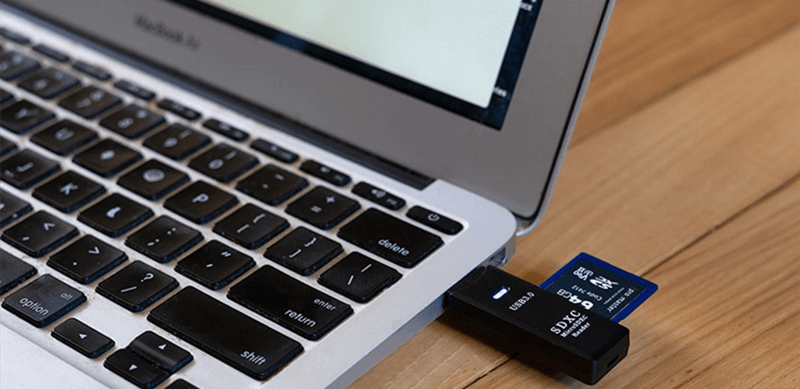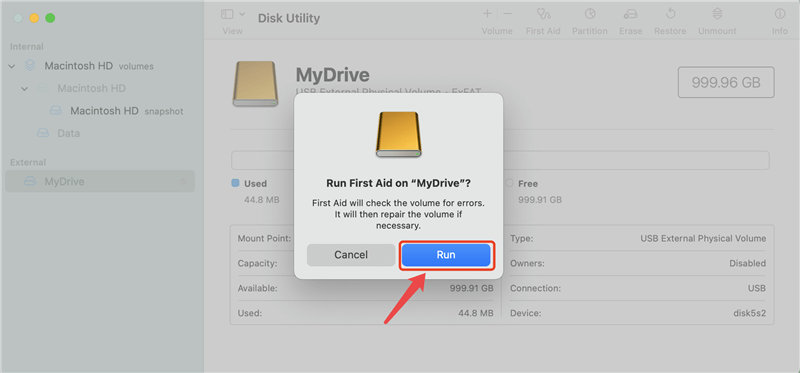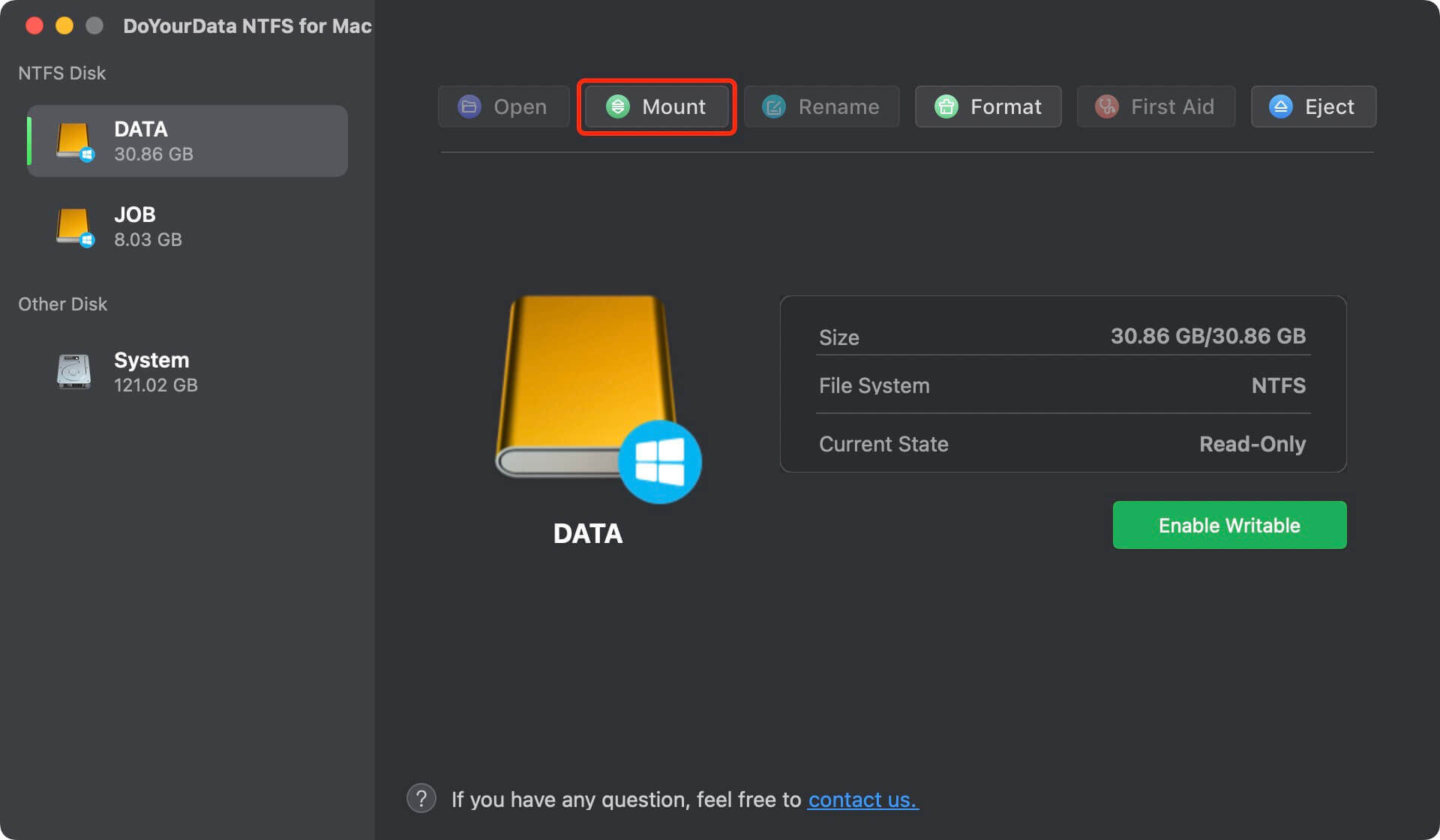Quick Navigation:
- Why is an SD card not recognized on macOS Sonoma?
- Some Fixes for SD cards not recognized on macOS Sonoma
- 1. Change Your Finder Settings
- 2. Check Connection and Card Slot
- 3. Try Another Card Reader or Adapter
- 4. Verify SD Card Compatibility
- 5. Use Disk Utility
- 6. Update macOS and Drivers
- 7. Use NTFS for Mac tool
- Recover Lost Data from SD Card on Mac
macOS Sonoma is known for its intuitive design, but it occasionally can't even read an SD card, which may be frustrating. This error is aggravating users and preventing efficient work completion. The first step in fixing an issue is figuring out what caused it. That could be anything from a loose connection or incompatibility to a corrupted file system.
This article aims to disentangle the knotty details of the SD card identification problem in macOS Sonoma/Ventura/Monterey/Big Sur, etc. By isolating the root cause of the issue and providing workable remedies, this article will help Mac users restore flawless functionality between their computers and SD cards.

Why is an SD card not recognized on macOS Sonoma?
There are several potential explanations for why macOS Sonoma cannot locate or identify your SD card if this problem occurs. The following are some of the most popular explanations:
Loose Connection or Improper Insertion:
There is a possibility that the SD card was not properly inserted into the card slot of the Mac or that the connection between the two was not secure.
Compatibility Issues:
Certain SD cards may not be compatible with the particular format macOS Sonoma or Mac's card reader will support.
Corrupted File System:
The operating system may be unable to recognize the SD card if the file system is destroyed or corrupted.
Outdated Drivers or Software:
Recognition issues are possible if the version of macOS and the drivers necessary to read the SD card are incompatible.
Physical Damage or Malfunction:
Proper detection can be prevented if the SD card or the card reader slot sustains physical damage.
Write Protection:
There is a hardware switch on some SD cards that provides write protection. If the card is locked, you won't be able to see it on your Mac.
Software Configuration Issues:
How macOS Sonoma identifies and interacts with external devices like SD cards could be affected by the settings and customizations available within the operating system.
Some Fixes for SD cards not recognized on macOS Sonoma
1. Change Your Finder Settings:
It may be as simple as adjusting your Finder Settings if your Mac doesn't recognize your SD card. You may have turned off the setting that displays removable media. Here's what you should do to solve it:
- Open Finder.
- Go to Apple menu > Finder > Settings.
- Click General and Sidebar, make sure External disks is selected.

The files on your SD card or other external storage devices can now be seen in Finder and on Desktop.
2. Check Connection and Card Slot:
Take the SD card out of its slot and put it back in forcefully. Take care to align the parts as you insert them.
Ensure a smooth connection by removing any dust or debris from the slot. You can carefully clean the slot with compressed air or a soft brush.
3. Try Another Card Reader or Adapter:
Use a separate USB port on your Mac by connecting the SD card with an external reader or adapter. That will assist in narrowing down the possibility that the Mac's internal slot is damaged.
4. Verify SD Card Compatibility:
Format for Checking Out: Before purchasing an SD card, make sure your Mac can read its format (SDHC, SDXC, etc.). The newer formats may not work on older Mac computers.
Make sure that the card can be written on and is not locked. A write-protect toggle may be found on some SD cards. If you need to, unlock it.
5. Use Disk Utility:
- Open Disk Utility: Launch Disk Utility from Applications > Utilities.
- Look for the SD card in the Disk Utility sidebar on the left.
- Select the SD card, then click "First Aid" to have the program analyze the card's file system for problems and fix them if it finds any.

6. Update macOS and Drivers:
Verify for New Mac OS Versions: Check for OS updates by selecting the Apple menu > System Preferences > Software Update.
Verify whether there are any SD card-specific driver upgrades available. Check for new versions in the App Store's Updates section or Apple's Support page.
7. Use NTFS for Mac tool
If the SD card has been formatted to NTFS, it won’t mount on your Mac. Download a third-party NTFS for Mac tool to mount the SD card on Mac and enable read-write.
Step 1. Download and install DoYourData NTFS for Mac, run it from Launchpad.
Step 2. Find the SD card, click on Mount button.

Step 3. Click Enable Writable button.

Recover Lost Data from SD Card on Mac
Whether you have erased the SD card or not, you can use a Mac data recovery application to help you restore deleted files, erased files and inaccessible files from the SD card.
- Recover existing files, deleted files and erased files from SD card.
- Export inaccessible files from unrecognized SD card to your Mac.
- Unformat SD card on Mac.
Step 1. Download and install Do Your Data Recovery for Mac on your Mac. Insert the SD card into your Mac and then open Do Your Data Recovery for Mac, select the SD card to start data recovery.

Step 2. Click on Scan button to deeply scan the SD card and find all recoverable files.

Step 3. Once the scan is completed, you can preview all recoverable files. Then select the wanted files and save them by clicking on Recover button.

Conclusion:
The failure of macOS Sonoma to identify an SD card can be very annoying, but the good news is that the problem is usually easy to fix. Users can often fix the issue without much effort by conducting diagnostic procedures like checking connections, validating compatibility, utilizing Disk Utility, updating software, etc.
If the problem persists despite these measures, however, hardware failure may be to blame. If you're experiencing problems with your Mac or SD card, contact Apple Support or visit an Apple Authorized Service Provider.